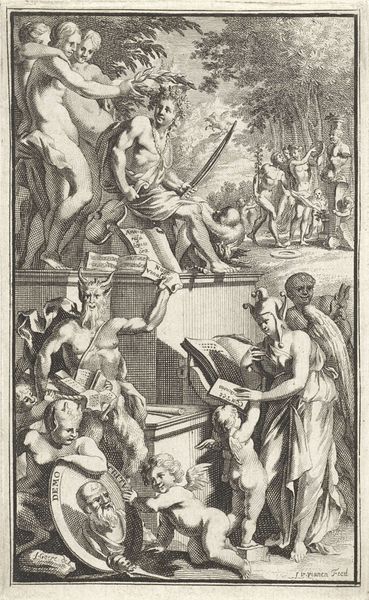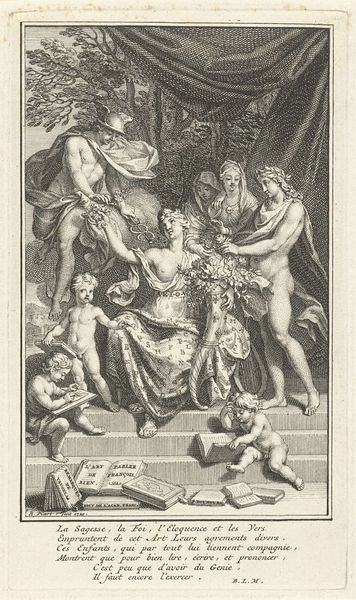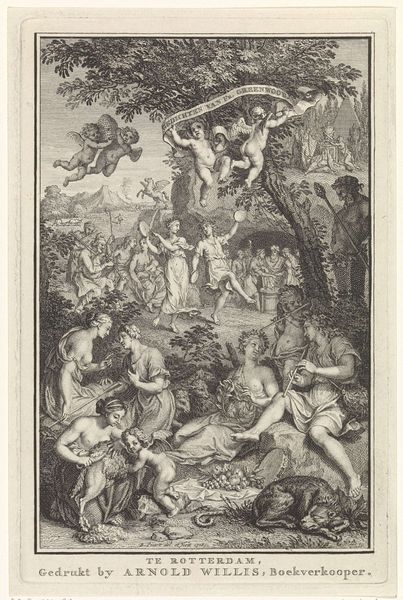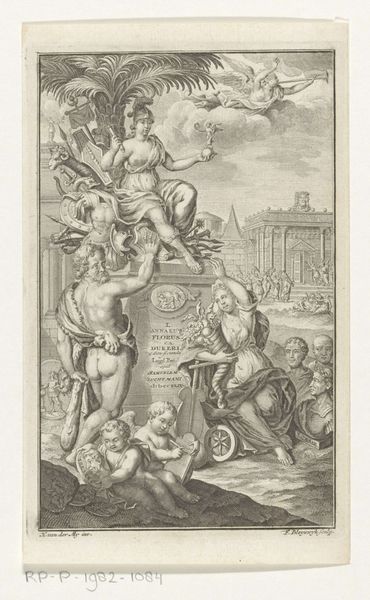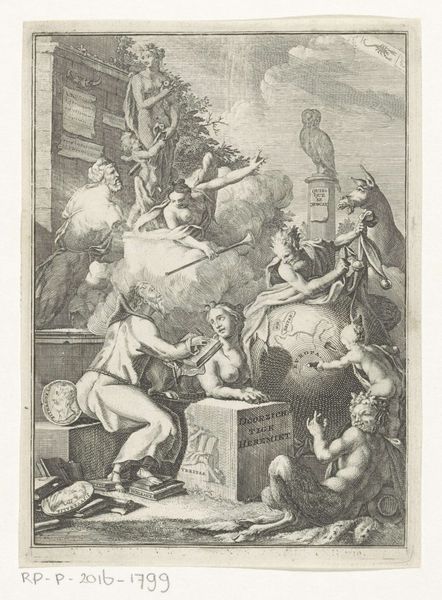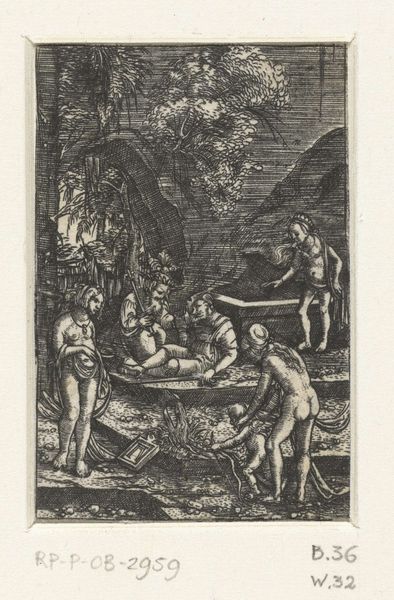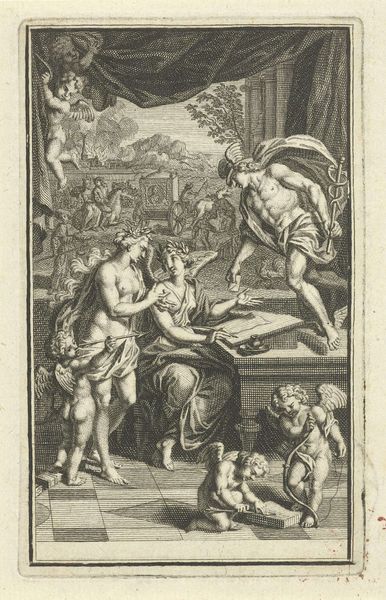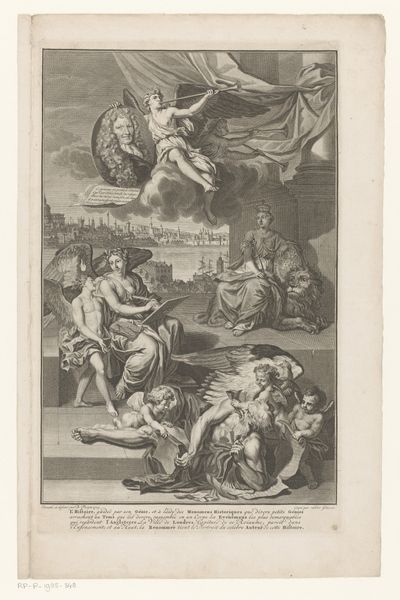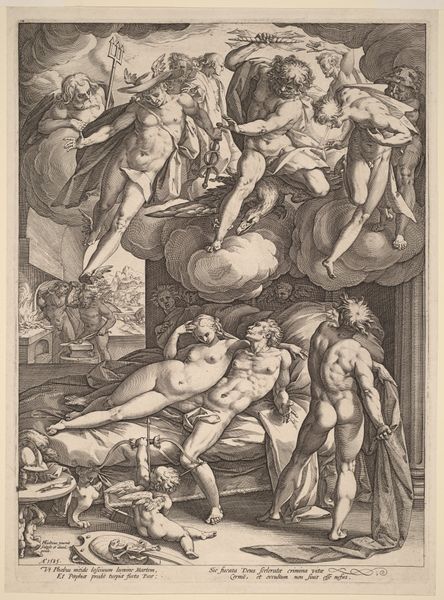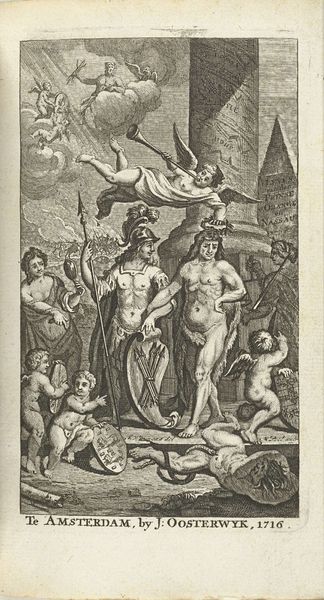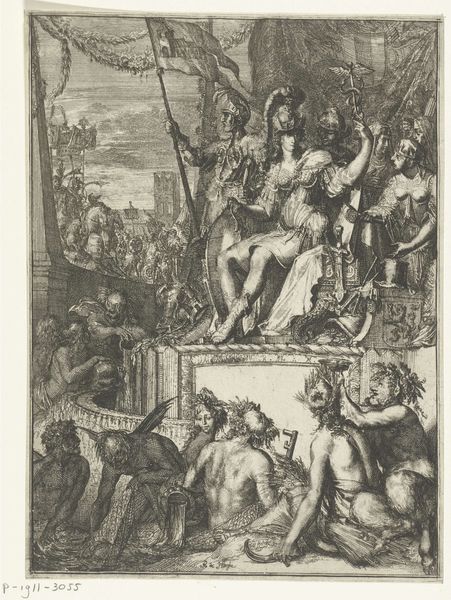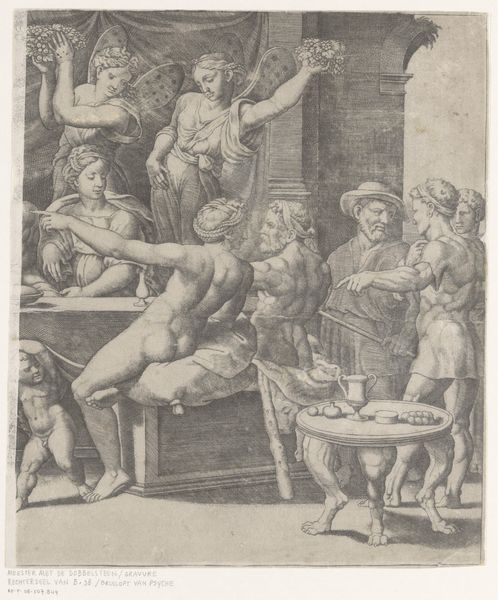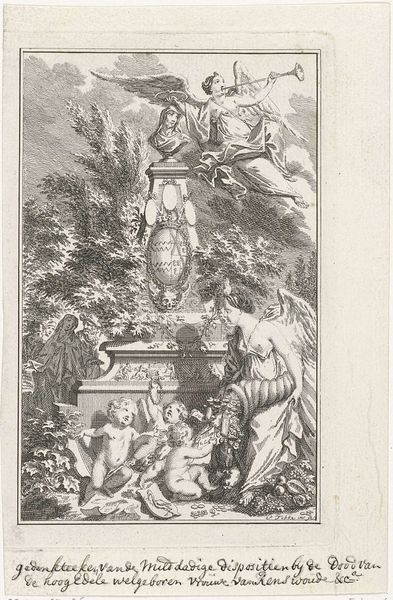
Groep naakte jongetjes waaronder jongen met narrekap en schrijvend en slapend kind 1696 - 1721
0:00
0:00
janbaptistberterham
Rijksmuseum
print, etching, engraving
#
narrative-art
#
baroque
# print
#
pen illustration
#
pen sketch
#
etching
#
old engraving style
#
figuration
#
pen-ink sketch
#
line
#
sketchbook drawing
#
genre-painting
#
engraving
Dimensions: height 139 mm, width 75 mm
Copyright: Rijks Museum: Open Domain
This print, etched by Jan Baptist Berterham, presents a group of nude children, among them a boy with a jester's cap, and another child writing and sleeping. The figure with the jester's cap holds our gaze; traditionally, the jester is a figure of mockery and folly, but also of insight. In antiquity, jesters or fools were often portrayed as close to the truth precisely because they were outside the bounds of social expectations. This figure echoes through time, reappearing in Shakespearean dramas where the fool, while jesting, provides commentary on the human condition. Like the ancient Greek philosophers, the jester uses apparent absurdity to reveal deeper truths. Observe the sleeping child. Sleep, the brother of death, is a recurring symbol in art, representing the subconscious, a journey into the self. This interplay between awareness and oblivion invites us to consider the cyclical nature of life and knowledge, continually rediscovered, forgotten, and reborn. These symbols, laden with cultural memory, evoke powerful emotional responses, engaging viewers on a subconscious level.
Comments
No comments
Be the first to comment and join the conversation on the ultimate creative platform.
